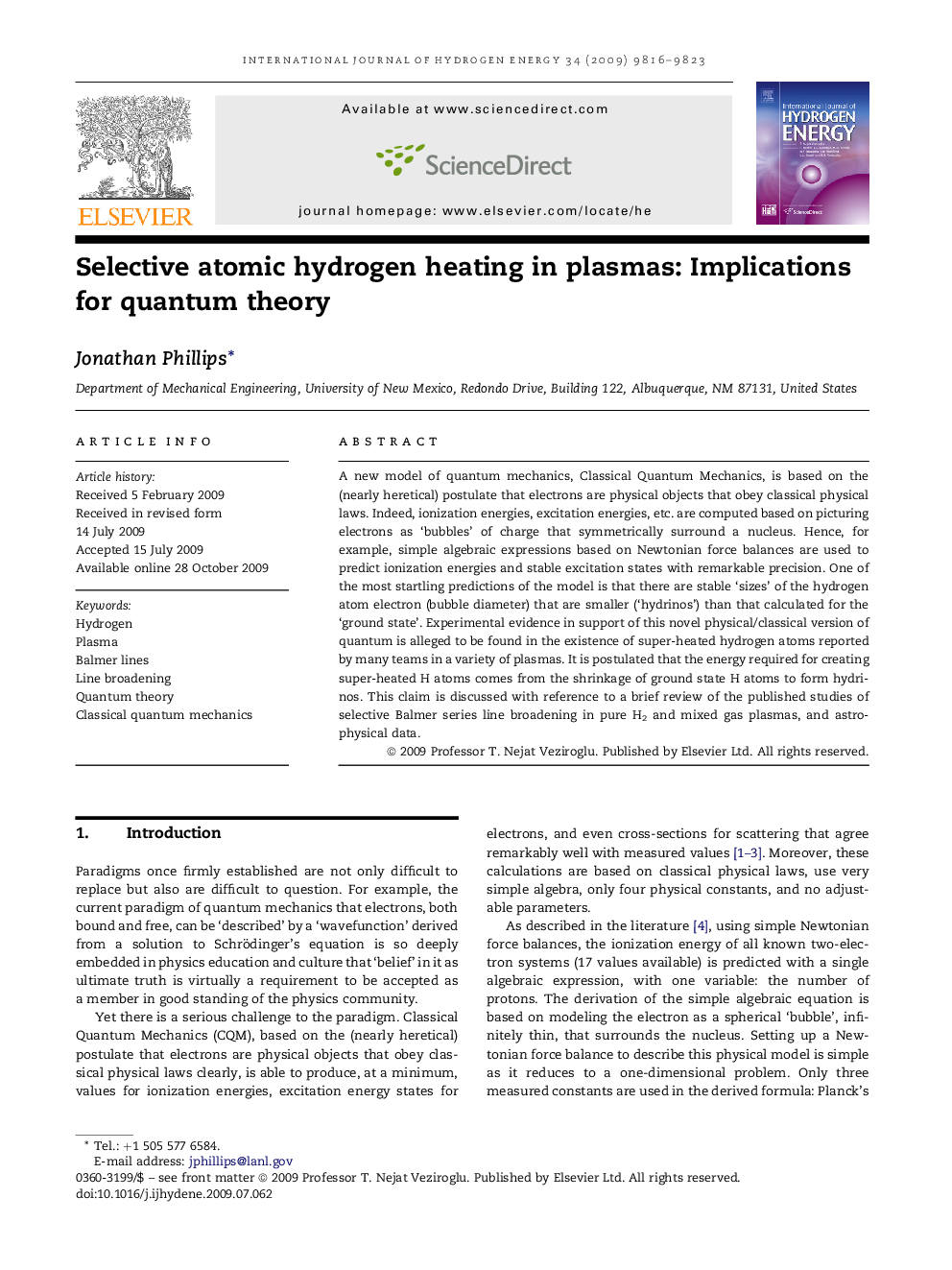| کد مقاله | کد نشریه | سال انتشار | مقاله انگلیسی | نسخه تمام متن |
|---|---|---|---|---|
| 1278211 | 1497617 | 2009 | 8 صفحه PDF | دانلود رایگان |
عنوان انگلیسی مقاله ISI
Selective atomic hydrogen heating in plasmas: Implications for quantum theory
دانلود مقاله + سفارش ترجمه
دانلود مقاله ISI انگلیسی
رایگان برای ایرانیان
کلمات کلیدی
موضوعات مرتبط
مهندسی و علوم پایه
شیمی
الکتروشیمی
پیش نمایش صفحه اول مقاله

چکیده انگلیسی
A new model of quantum mechanics, Classical Quantum Mechanics, is based on the (nearly heretical) postulate that electrons are physical objects that obey classical physical laws. Indeed, ionization energies, excitation energies, etc. are computed based on picturing electrons as 'bubbles' of charge that symmetrically surround a nucleus. Hence, for example, simple algebraic expressions based on Newtonian force balances are used to predict ionization energies and stable excitation states with remarkable precision. One of the most startling predictions of the model is that there are stable 'sizes' of the hydrogen atom electron (bubble diameter) that are smaller ('hydrinos') than that calculated for the 'ground state'. Experimental evidence in support of this novel physical/classical version of quantum is alleged to be found in the existence of super-heated hydrogen atoms reported by many teams in a variety of plasmas. It is postulated that the energy required for creating super-heated H atoms comes from the shrinkage of ground state H atoms to form hydrinos. This claim is discussed with reference to a brief review of the published studies of selective Balmer series line broadening in pure H2 and mixed gas plasmas, and astrophysical data.
ناشر
Database: Elsevier - ScienceDirect (ساینس دایرکت)
Journal: International Journal of Hydrogen Energy - Volume 34, Issue 24, December 2009, Pages 9816-9823
Journal: International Journal of Hydrogen Energy - Volume 34, Issue 24, December 2009, Pages 9816-9823
نویسندگان
Jonathan Phillips,